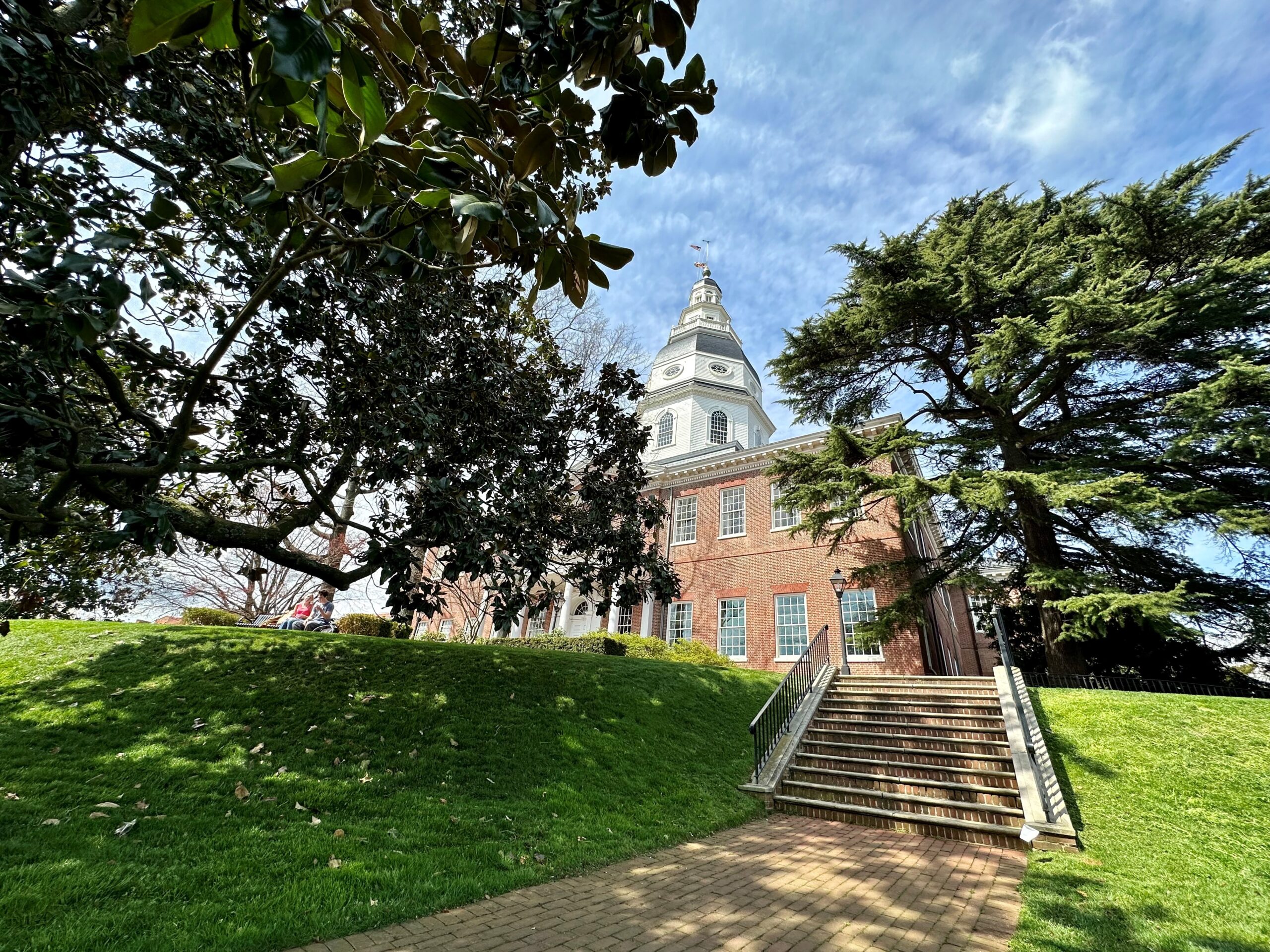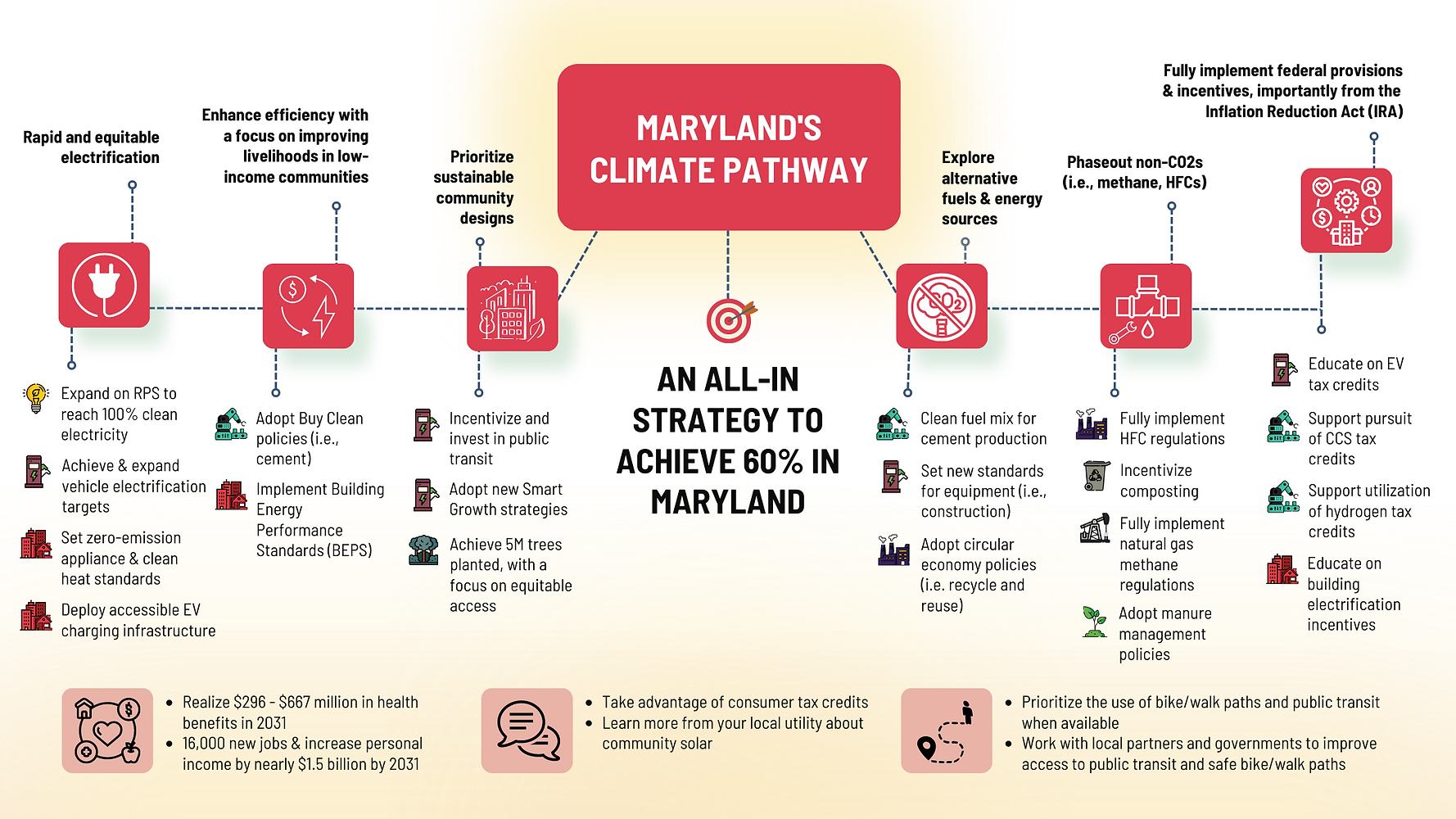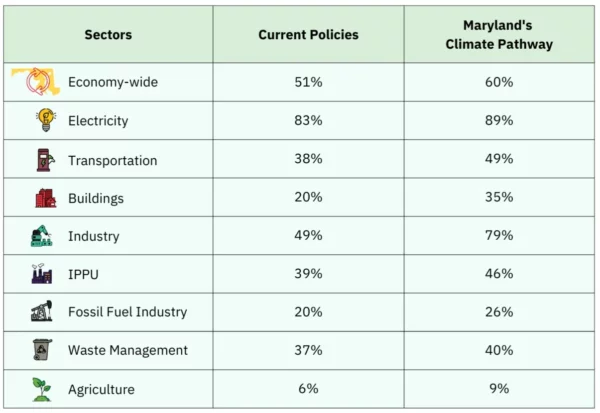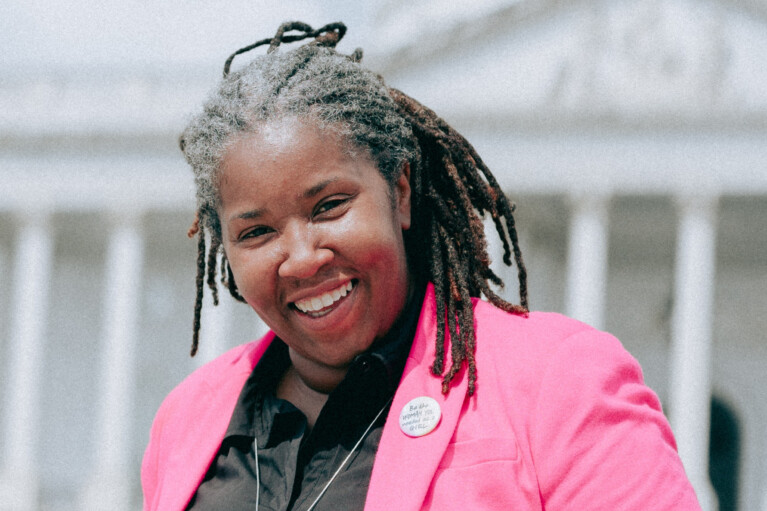Report offers glimpse of what it will take for state to reach ambitious climate goals

Maryland is halfway toward meeting its ambitious climate goals, and a path exists for the state to reach net-zero emissions by 2045.
That’s the conclusion of a preliminary report issued Friday by the Maryland Department of the Environment. The analysis, “Maryland’s Climate Pathway,” lays out policy, regulatory and lifestyle changes that the state needs to embrace to meet the carbon-reduction goals mandated by the Climate Solutions Now Act of 2022.
State law seeks a 60% reduction in greenhouse gas emissions by 2031 and requires the state to hit net-zero emissions 14 years after that.
“The rapid, clean, affordable, and just energy and economic transition needed to achieve these goals will be challenging, but it is possible,” the report, assembled by the Center for Global Sustainability at the University of Maryland School of Public Policy says.
The new analysis will be used as a jumping-off point for the Department of the Environment to take the public pulse this summer on the state’s climate goals and use that input for a final report, to be issued in December, on what the state needs to do to achieve them. That report is likely to result in legislation and regulatory action to strengthen Maryland’s climate protections.
“What we’re going to do now is open up the public process,” Serena McIlwain, the state’s Environment secretary, said during an online news conference Friday. “We want to hear from everyone.”

A graphic in a new report called “Maryland’s Climate Pathway” suggests how Maryland can reach its ambitious climate goals.
McIlwain and other state officials said that pushing toward achieving the state’s aggressive climate goals will also improve public health, boost the economy and help alleviate environmental justice challenges and comes at an opportune time, with potential federal investments in clean energy technology and climate initiatives at an all-time high. And, they said, the effort must focus on communities and populations in the state that bear the brunt of climate change.
“It’s ensuring that we’re paying attention to the most vulnerable people in the most vulnerable parts of the state,” said Nathan Hultman, director of the Center for Global Sustainability.
But the officials concede that the effort will not be easy, and will require concessions and adaptation from a variety of economic sectors — as well as the general public.
“Achieving the State’s climate goals requires a holistic approach that considers the interconnection between the economy, environment, and health and social well-being of Maryland,” the report says. “Environmental benefits, such as reducing [greenhouse gas] emissions, conserving natural resources, and preserving ecosystems, are crucial for safeguarding Maryland’s unique biodiversity and ensuring a sustainable future for generations to come. At the same time, it is essential to foster economic prosperity by capitalizing on clean energy investments, promoting sustainable industries, and creating green jobs.
“These commitments not only drive economic growth but also enhance the quality of life for Marylanders through increased employment opportunities, innovation, and technological advancements. Moreover, prioritizing health and social benefits is essential to ensure that climate action is inclusive and equitable, addressing the needs and vulnerabilities of marginalized communities, promoting social justice, fostering community resilience, and improving access to clean air and water.”
The researchers found that as of 2020, Maryland had already achieved half of the carbon reductions needed to meet the 2031 target — 36.7 megatons of the 73.3 megatons required. Full implementation of existing policies can achieve another 26 megatons of carbon emissions reductions by 2031, leaving one fifth of the reductions left — a gap of 10.6 megatons that must be filled by new policy action.
The biggest greenhouse gas reductions, the report said, can be realized over the next several years in the power (89%), industry (79%), building (68%) and transportation (49%) sectors.

A graphic in the report suggests where carbon emissions reductions can come from.
The report lays out proposed policy changes and action plans by economic sector:
Electricity. “Decarbonizing the electricity sector,” the analysis says, “is a central component of success, not only for reducing emissions within the sector, but also for enabling the decarbonization of other sectors, such as transportation, buildings, and industry, where electrification is a key solution.” The report suggests that to achieve 100% clean energy sources by 2035, coal phaseout and grid stability need to be prioritized. It also says Maryland should leverage its involvement with the Regional Greenhouse Gas Initiative, a regional carbon-trading program, to set a cap for net-zero by 2040. And the state will need to accelerate the deployment of renewable energy sources, particularly solar.
Transportation. Even though Maryland has adopted standards like Advanced Clean Cars II and passed the Maryland Clean Trucks Act, barriers need to be overcome to achieve the transition to electric vehicles and the infrastructure required to support them, the report says. “Access to charging stations, affordability of EVs, and addressing range anxiety are key concerns. Additionally, reducing vehicle miles traveled (VMT) and promoting alternative modes of transportation, such as e-bikes and public transit, are important strategies to reduce emissions.”
Buildings. Maryland needs to push for building electrification and efficiency measures, including transitioning to higher-efficiency electric appliances and taking advantage of a cleaner electric grid to reduce emissions. “However, challenges arise regarding access and affordability for all individuals, particularly low-income homeowners and renters. Integrating renewable energy sources into building electrification also poses scalability, grid stability, and storage capacity challenges. Retrofitting older buildings to accommodate zero-emission appliances, such as heat pumps, can be complex and may require significant modifications. Additional concerns include historic preservation requirements, upfront costs, and installation disruptions.”
Industry. “Decarbonizing the industrial sector has historically been one of the toughest goals to accomplish due to policy limitations and technical challenges,” the analysis says. It recommends removing a state exemption for the manufacturing sector for certain greenhouse gas emissions reductions as a key component.
Waste. Maryland, the report says, needs to improve data on waste sources and composition and address barriers to waste diversion policies like composting. The state should consider changing the energy classification of waste incineration and look for ways to reduce wastewater emissions.
Agriculture. While the state acknowledges that Maryland’s farmers have already taken significant steps to reduce carbon emissions and other pollutants, the biggest problem in the agricultural sector is methane, a potent emission from large agriculture operations.
The report also says the state may want to consider adopting a cap-and-trade program to make polluters pay for their emissions — a concept that has been a political non-starter most places in the U.S. (though the Regional Greenhouse Gas Initiative auctions off pollution credits for electric plants powered by fossil fuels).
Enviros say they’re hopeful
Several environmental leaders — in Maryland and beyond — were enthusiastic about the preliminary report.
“Broadly speaking, this is a big step toward pushing Maryland to achieving its climate goals,” said Josh Tulkin, executive director of Sierra Club’s Maryland chapter. “Top level, this shows that Maryland has a pathway and an economic pathway to get there. This is a viable pathway for Maryland, and it’s a pathway with economic and public health benefits.”
Tulkin acknowledged that the state’s attempts to get public input about the report could be complicated and conceded that the plan of action will require political courage. But he said the analysis appears to represent a major advancement from the administration of former Gov. Larry Hogan (R) to the administration of new Gov. Wes Moore (D).
Emily Scarr, director of Maryland PIRG, said that if policymakers follow the recommendations in “Maryland’s Climate Pathway,” “we can give our children and grandchildren the healthier future they deserve. In particular, the governor and state legislature should move quickly to improve the efficiency of our homes. Making the shift to efficient electric appliances and heating will help lower utility bills and protect our health.”
And national climate leaders are paying attention.
A New York-based communications firm representing the climate group America Is All In, released supportive statements Friday from Michael Bloomberg, the former New York mayor and an international climate activist, and Washington Gov. Jay Inslee (D), whose state is considered a climate innovator.
“You wouldn’t start a road trip without a GPS. Similarly, states can’t reach net-zero without a roadmap,” Inslee said. “Governor Moore is joining the growing chorus of governors that are leading the climate fight by adopting an all-of-society approach cutting emissions. Here in Washington state, we are proud to cheer on his administration’s efforts.”
The Maryland Department of the Environment has scheduled half a dozen events for the public to weigh in on the pathway report. They will be held in-person on July 25, Aug. 8, Aug. 14, and Aug. 19 — though details on time and location have not been released. Virtual events will be held on Sept. 5 and Sept. 26.
Marylanders can also offer comments in writing by using this online form. They are asked to consider the following questions:
- What new policy would you like the state to consider to achieve its greenhouse gas reduction goals? What are the costs and benefits of implementing the policy? How does the policy address equity, especially for low-income and historically disadvantaged Marylanders? Would the policy create new jobs or have other workforce impacts?
- Other than new policies, what do you think the state should consider when developing its greenhouse gas reduction plan?




 Creative Commons Attribution
Creative Commons Attribution